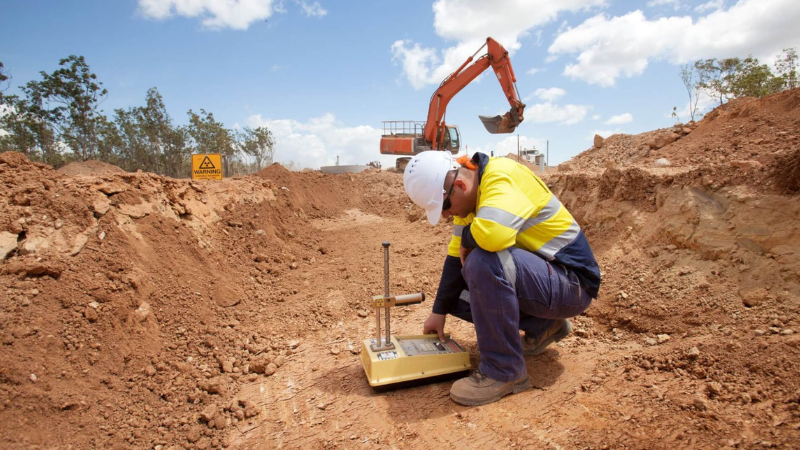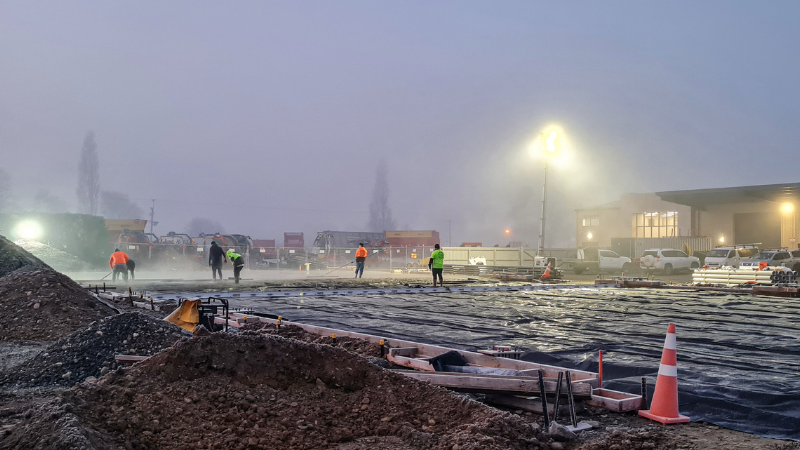What are the options for Stormwater Management?

In the face of recent weather events, flooding, and heightened attention to climate change, stormwater management is becoming a critical concern for councils and landowners. As urbanisation continues to expand, the impact of stormwater runoff from large buildings and concrete surfaces has led to a growing focus on effective disposal methods.
In this article, we delve into key considerations for landowners to keep in mind when dealing with stormwater, exploring the challenges, costs, and potential solutions.
The Complexity of Stormwater Management
Managing stormwater effectively can be challenging due to its multifaceted nature. Unlike other types of water disposal, such as sewage or runoff, stormwater presents unique difficulties in both cost and logistics.
While water running off roofs and paved areas must be directed away from structures, finding appropriate methods of disposal can vary greatly based on the specific circumstances of a property. The requirements can be somewhat of a sliding scale depending on your location, project, and regional regulations.
Disposing Stormwater: The Basics
The most straightforward and cost-effective method of stormwater disposal is connecting to the local council's stormwater system. This typically involves trenching and connecting downpipes, allowing runoff to flow into the council drainage network. However, this option is becoming less viable as councils restrict the number of stormwater connections to systems that are at or near capacity.
Typically, this method is only permitted for smaller projects, particularly on land where there are under utilised connections or in developments that have been specifically designed to take stormwater from all the properties.
Beyond Basic Disposal: Attenuation Tanks and Soak Pits
When council connections are limited, alternative methods such as attenuation tanks and soak pits are the next consideration. An attenuation tank temporarily stores stormwater before releasing it slowly into the system through a smaller pipe, preventing overload.
If an attenuation tank is not suitable, another option is to divert some or all of the water to a soak pit. Soak pits allow water to percolate into the ground, which is particularly effective in areas with suitable soil properties.
Designing for Site-Specific Needs
In many cases, a bespoke stormwater management plan is required. This is because the council requires most of the stormwater to be disposed of on-site or the volume of water is significantly higher than a simple soak pit design can achieve.
The civil engineer will assess the property's characteristics, such as soil type, water table levels, and potential flood risks. Based on the results, they will guide the design of an appropriate disposal system by working closely with the geotechnical engineers and architect. This is critical as the stormwater design can have a considerable impact the overall design.
For example, the stormwater design may require the building to be raised to allow for falls, thus affecting the foundations and accessibility of the building. Details like the height of the water table and the drainage properties are also important as these can vary regionally but even across the same site.
The civil engineer must have a thorough understanding of what the local and regional councils require because it is common for one to approve while the other does not. These two councils are assessing different aspects, meaning the design can get mired between the two. For example, the regional council may require resource consent to discharge stormwater while local councils do not.
Many local councils will advise the level of design they require, which can have a significant impact on design and the level of capacity that needs to be worked into your design. For example, councils may require 1 in 50-year or 1 in 100-year events.
Costs and Budgeting
Costs associated with stormwater management can vary significantly based on the chosen method and the property's specific needs. There are two parts to the cost, including the cost of the design and the cost of the installation.
Basic connection to council
If you are able to connect to the council system, your architectural designer would show this on your site plan. In this case, you are unlikely to incur any additional designer or consultant fees.
For the cost of installation, you will pay the cost of laying a pipe from the building to the connection, which is likely to be a few thousand dollars, depending on the distance. There may also be the cost of a lateral, depending on what is at the connection.
ADDING an attenuation tank & soak pit
If you need to add an attenuation tank alongside the council connection, the Architectural designer should be able to sort these details, provided the size of the area is not too large and there are no other civil requirements. There is then the additional cost of tanks, which can be found at suppliers like Promax.
If you need to incorporate a soak pit, the architectural designer may be able to calculate this, provided the council accepts standard percolation (soakage rates). If not, you may need a design done, which could cost $3,000 - $6,000, depending on testing requirements. The cost of a soak pit varies a lot, from a few thousand dollars (if it is simply a hole with rocks in it) to $10,000 or more.
Civil engineered design
Under this option, you will need to engage an engineer. The cost can vary but often sits between $10,000 and $30,000, depending on the following:
- What testing is required to determine water table/soakage rates?
- How big is the design? - i.e. How much water is being disposed of through the system?
- Are additional designs required for pavements, crossings, or retaining walls?
- Is resource consent required? – Regional councils may require consent to discharge stormwater.
- Does the consultant need to consider hydraulic neutrality?
The cost of the above can vary significantly depending on the scale of your project. In recent projects for builds around 3,000m2 – 5,000m2 on larger sites, the cost has been between $100 - $250k. It all depends on what is included and whether the works are done in conjunction with the bulk siteworks and yard earthworks.
what to consider when getting a stormwater design done
Firstly, get good consultants that you have confidence in. They should also be prepared to put forward options for you to consider, rather than giving a cookie-cutter response. Cheaper consultants often skip this step, which can result in more expensive solutions.
Secondly, consider what the consequence of a stormwater management failure could be. For example, one of our clients installed a system that met council requirements but did not have huge excess capacity. The landowner was happy with the cost savings, knowing that, if the system did reach capacity, water would go to the back of the property and not affect his building.
Another area landowners often look at is the finished floor level (FFL) in relation to other buildings, roads, or infrastructure in the area. If it is a low area and there is the option to increase the FFL of the building, this can be a good insurance policy.
As you grapple with the challenges of stormwater management, a broad understanding of the available options and associated costs is extremely helpful. Practical solutions, risk mitigation, and a clear understanding of local conditions can guide you toward an effective and financially viable stormwater disposal strategy.
Collaborating with experienced professionals, such as XL Structural Streel, will ensure that both environmental concerns and regulatory obligations are met, enabling landowners to navigate stormwater challenges successfully. For more information on some other key areas councils have focused on this year, read our article here or click the link below.



